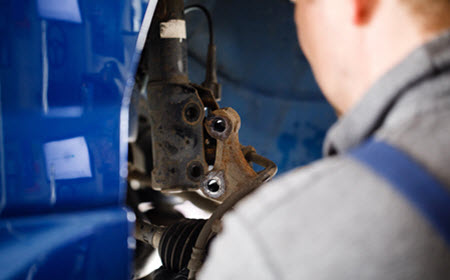Most Subaru drivers have dealt with inner joint boots failure at some point in their car ownership. This problem affects the transmission system in Subarus and can dampen your driving experience significantly.
With regular servicing, you can postpone inner joint boots failure for a while, but it eventually catches up, and when it does, you should know what to do. Let’s take a closer look at why the inner joint boots fail and some signs that you should be on lookout for in your Subaru.
What This Type of Failure Means for Your Subaru
Inner joint boots are small components in your Subaru’s transmission system. If you’re thinking that the name inner joint boots suggests the existence of outer joint boots, you are right. It’s important to take note of these two different joint boots as they perform different tasks.
For context, there are constant velocity joints, CV joints as they’re often referred, on either ends of a drive shaft. One end of the drive shaft, which is the inner end, connects the drive shaft to the transmission. The other end, which is the outer end, connects the drive shaft to the wheels. While the inner joints are responsible for connecting the drive shafts to the transmission, the outer joints are tasked with transferring torque from the transmission to the wheels at a regular speed. It does this while simultaneously containing the up and down motion in the suspension. This is where the joint boots come in.
Joint boots are often a rubber component that is filled with a specific type of grease and sealed tight to cover the inner and outer joints. The inner joint boots are secured in place using two clamps to protect the inner joint from any damage.
This means that for a front-driving car like your Subaru, a problem in the inner joint boot will affect your driving experience. This occurs because such failure will expose the CV joints to potential problems, causing transmission malfunctions.
Causes of Inner Joint Boot Failure
The most common cause of inner joint boot failure is regular wear over time. This component is made up of rubber or in some cases a strong type of plastic. This leaves it susceptible to wearing out due to external factors, such as extreme weather or even heat from the running of your engine. These cause excessive contraction and expansion of the rubber inner joint boot to a point where it dries out and is unable to expand and contract. What follows is that it develops cracks that then leak out the special grease. This will result in the CV joints getting exposed to excessive friction due to insufficient grease to lubricate the parts.
Look for These Signs of Inner Joint Boot Failure
A direct result of inner joint boots failing is that the CV joint will be exposed to damage. This is what will prompt some symptoms that point to a possible problem to show up. One such symptom is that there will be strange noises coming from your transmission when you’re negotiating corners. These noises are from the loosened worn out smaller components in the CV joint clicking against each other. The noises become louder around corners because that’s when there’s a change in torque to the wheels, straining them a little more.
You may also notice the presence of grease on the inner edge of the tire. This is usually the inner joint boot grease leaking from the cracks in the worn out boot. Cracked inner joint boots allow debris into the CV joint that can damage the joint in the long run.
You may also notice your car experiencing excessive vibrations from the transmission. This is the result of damage to the CV joint which throws the axle shaft off its balance while it rotates. These vibrations may also increase as you accelerate, compromising your Subaru’s handling while reducing the comfort of being in the car.
Professional Automotive for Your Subaru

The inner joint boots in your Subaru play the important role of protecting the CV joint from damage. When you experience any of these signs, seek out our certified mechanics to get to the root cause of the matter. This will help minimize any further damage to your transmission that may necessitate expensive repairs. Professional Automotive will help in Marlborough, MA. Give us a call if you’re having potential inner joint boot issues and we’ll fix it affordably to get you safely back on the road.
* Subaru Car image credit goes to: kurmyshov
 Mon - Fri: 7:30 am - 5:30 pm
Mon - Fri: 7:30 am - 5:30 pm 19 Mechanic St,
19 Mechanic St, (508) 485-8633
(508) 485-8633
